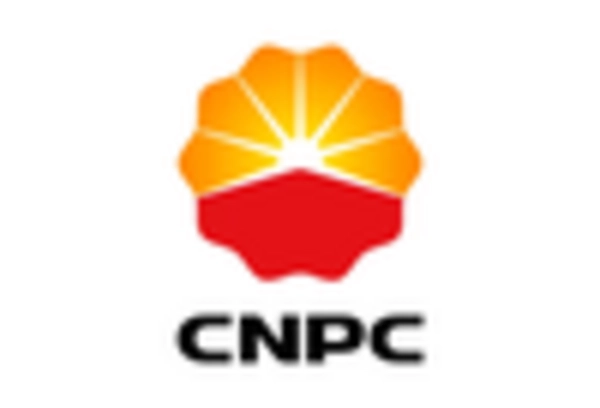Rising Energy Demand
The Asia Pacific Renewable Energy Market is experiencing a notable surge in energy demand, driven by rapid urbanization and industrialization across the region. Countries such as India and China are witnessing unprecedented growth in energy consumption, with projections indicating that energy demand could increase by over 30 percent by 2030. This escalating demand necessitates a shift towards renewable energy sources to ensure energy security and sustainability. As a result, investments in solar, wind, and hydroelectric power are likely to rise, fostering a more resilient energy infrastructure. The increasing energy needs of both residential and commercial sectors further emphasize the urgency for the Asia Pacific Renewable Energy Market to adapt and innovate, potentially leading to a more diversified energy portfolio that prioritizes renewable sources.
Corporate Sustainability Goals
The increasing emphasis on corporate sustainability goals is driving the Asia Pacific Renewable Energy Market towards greater adoption of renewable energy sources. Many corporations are committing to ambitious sustainability targets, including achieving net-zero emissions by 2050. This trend is particularly evident among multinational companies operating in the region, which are increasingly seeking to source renewable energy to power their operations. For instance, major tech firms are entering power purchase agreements (PPAs) to secure renewable energy supplies, thereby influencing market dynamics. The shift towards sustainable business practices not only enhances corporate reputations but also aligns with consumer preferences for environmentally responsible products and services. Consequently, this growing corporate commitment to sustainability is likely to bolster the demand for renewable energy within the Asia Pacific Renewable Energy Market.
Public Awareness and Consumer Demand
Public awareness regarding climate change and environmental issues is significantly influencing the Asia Pacific Renewable Energy Market. As consumers become more informed about the impacts of fossil fuels, there is a noticeable shift in demand towards cleaner energy alternatives. Surveys indicate that a substantial percentage of consumers in countries like Japan and South Korea are willing to pay a premium for renewable energy options. This heightened consumer demand is prompting energy providers to diversify their offerings and invest in renewable energy projects. Additionally, educational campaigns and community initiatives are fostering a culture of sustainability, further driving the transition towards renewable energy sources. The growing public support for renewable energy initiatives is likely to play a crucial role in shaping the future landscape of the Asia Pacific Renewable Energy Market.
Government Initiatives and Incentives
The Asia Pacific Renewable Energy Market benefits significantly from proactive government initiatives and incentives aimed at promoting renewable energy adoption. Various governments in the region have implemented policies that encourage investment in renewable technologies, such as feed-in tariffs, tax credits, and grants. For instance, Australia has set ambitious renewable energy targets, aiming for 50 percent of its electricity generation to come from renewable sources by 2030. Such initiatives not only stimulate market growth but also enhance investor confidence, leading to increased funding for renewable projects. Furthermore, the alignment of national energy policies with international climate commitments suggests a robust framework for the Asia Pacific Renewable Energy Market, potentially accelerating the transition towards a low-carbon economy.
Technological Advancements in Energy Storage
Technological advancements in energy storage solutions are poised to transform the Asia Pacific Renewable Energy Market. Innovations in battery technology, particularly lithium-ion and flow batteries, are enhancing the efficiency and reliability of renewable energy systems. The ability to store energy generated from solar and wind sources allows for a more stable energy supply, addressing the intermittency challenges associated with these resources. As of 2025, the energy storage market in Asia Pacific is projected to grow significantly, with estimates suggesting a compound annual growth rate of over 20 percent. This growth is likely to facilitate the integration of renewable energy into existing grids, thereby strengthening the overall energy infrastructure and supporting the region's transition to a sustainable energy future.

















Leave a Comment